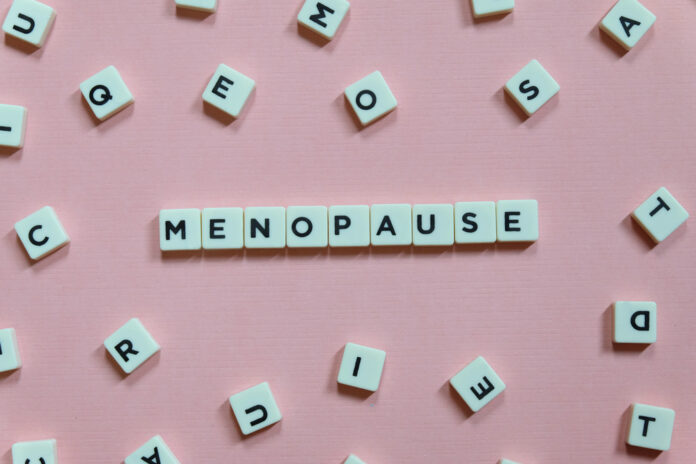Introduction To Menopause
Menopause is the transition all women experience when they go from fertile to concluding the period of fertility in their lives. Generally speaking, menopause begins when a woman has gone through 12 full months without a period.
It may be accompanied by symptoms like hot flashes, vaginal dryness, low libido, and night sweats due to a decline in estrogen. Menopause and depression may often go together, as do a decline in bone and joint health and weight gain.
Many of these issues may benefit from regular exercise, so during menopause carrying out a regular physical routine is particularly important. One research study discussed menopause, physical activity, and health during the menopause transition.
How Does Exercising Affect Menopause?
Exercising regularly may help assist in weight management, which might be a significant issue during the menopause years. It helps speed up the metabolism, so you burn additional calories and lose fat rapidly. There is some evidence indicating that exercise could help develop well-being, lower stress, decrease depression, and enhance your sleep quality. In addition, it may also lessen the severity of hot flashes in your body.
Working out can strengthen the joints and bones, which are areas that tend to diminish during menopause. It can help lower the chances of developing osteoporosis, which is a big risk during this time. An article in the Brazilian Journal of Physical Therapy outlined an exercise routine to prevent osteoporosis in postmenopausal women.
Along with a consistent exercise regimen, many women benefit from one of the top-rated menopause supplements on the market. They can decrease your symptoms, so it is easy for you to carry out your exercise routine.
4 Dos And 4 Don’ts Of Exercise And Menopause
Although most types of exercise are suitable during menopause, there are some essential dos and don’ts that you should follow when planning your exercise routine.
The Dos:
- Do Find an Activity You Enjoy
When you decide on your new menopause exercise routine, make sure you choose an activity or activities that you actually enjoy doing. In that way, it should become somewhat addictive over time instead of being a chore. Yoga for menopause is popular right now, and many women swear by it for boosting mood, reducing anxiety, and easing symptoms.
There is some research supporting the benefits of yoga for women in menopause. A systematic review concluded that yoga was efficient, and it may help lessen the psychological symptoms associated with this time of life.
- Do Stay Hydrated
Dehydration can be an issue during menopause, as it’s one consequence of decreasing levels of estrogen, which means that during menopause, you have to be particularly careful to drink a lot of water during the day and especially before you exercise.
Being dehydrated can worsen your symptoms, which is the exact opposite of the result you want. There are some top-rated menopause supplements on the market that include hydrating and electrolyte-balancing ingredients.
- Develop a Workout Plan First
When you decide to start a new menopause exercise plan, make sure you plan carefully in advance what you are going to do. Decide what parts of your body you want to work out and the best way to do that while keeping your exercise low to moderate impact.
If you are working out in a gym, see if you can get some assistance from one of the fitness instructors to plan your routine. Doingyoga for menopause will require some careful research in advance to plan out the correct moves to meet your needs.
- Take A Supplement To Diminish Symptoms
There is a wide range of organic menopause supplements on the market, such as the potent Kindra. Taking one of these products on a regular basis can raise estrogen levels and balance your hormones.
It decreases symptoms, which makes carrying out your exercise routine much easier. These supplements may also increase energy levels, and low motivation is a big issue during menopause. A supplement should help you get on your feet and exercise in comfort.
The Don’ts:
- Don’t Overexert Yourself.
There are numerous reasons not to overdo your exercising and to make a great effort to pace yourself and develop your abilities over time. Over-exercising can make you more susceptible to incurring an injury, and it can also cause you fatigue.
Proceeding this way will lead you to burnout in no time, and you may end up stopping your workout. Too much exercise may even lead to mood swings or menopause and depression.
- Don’t Do High Impact Aerobics.
Many women suffer from bone and joint weakness during menopause, so it is best to avoid high-impact activities like aerobics or anything where you could easily incur a fall. It may also pertain to where you exercise, meaning stay away from slippery floors or exercise steps.
There is a particular exercise that puts a lot of extra pressure on the spine, like sit-ups and toes touching. As such, you should also try to avoid them during your workout.
- Don’t Exercise Without Eating.
Never go into a workout without taking in some fuel first. Without it, you’ll become sluggish, and your workout will lose its intensity. Prior to exercise, it is always required to take in some protein and carbohydrates to give your body what it needs to work out for a longer time at an extended intensity. It is also important to eat carbs and protein within a couple of hours after your workout to enhance muscle recovery.
- Don’t Focus on Only One Area of Your Body.
Find an activity that works out your entire body rather than simply addressing one area. Your routine should include several activities to target different health issues. For example, cardio like jogging or swimming is great for weight loss, as well as for supporting heart health.
Include some strength activities to support the bones and muscles and stretches for better balance and agility. The mix of different activities provides some variety and should help boost your motivation.
Conclusion
Exercise is one of the best natural methods for easing the symptoms associated with menopause, both mental and physical. It can speed up the metabolism and burn calories. It can also help with weight loss, improve brain health, strengthen the joints and muscles, enhance mental health, and decrease anxiety.
It is always important to follow some basic principles when exercising during menopause. The first thing is staying hydrated, eating before a workout, pacing yourself, planning, and avoiding high-impact aerobics that could be harmful. In addition, consider taking a potent menopause supplement like Kindra to decrease your symptoms for an easier workout.
Therefore, remember always that you should choose an exercise you love to do and get out there and live your best life!
References:
- https://www.ncbi.nlm.nih.gov/pmc/articles/PMC3270074/
- https://www.ncbi.nlm.nih.gov/pmc/articles/PMC3524799/
Author Bio:
Sophia Anthony is a freelance writer and blogger, covering health and fitness topics through visual representation. She is very passionate about general health and beauty. Apart from work she likes dancing and listening to music. You can also contact her on Facebook, and Instagram.
Write and Win: Participate in Creative writing Contest & International Essay Contest and win fabulous prizes.
















